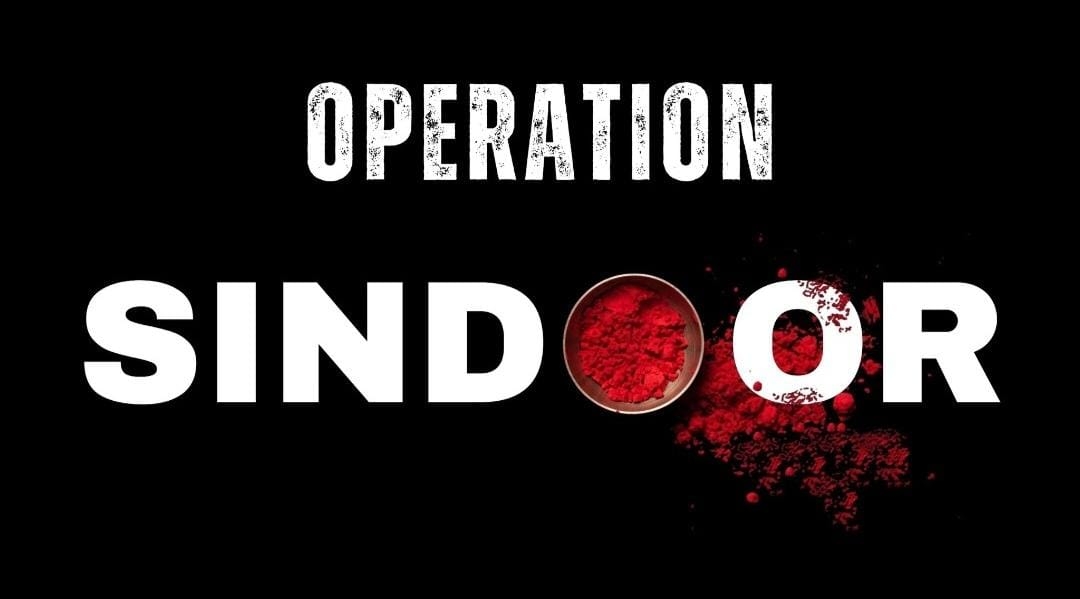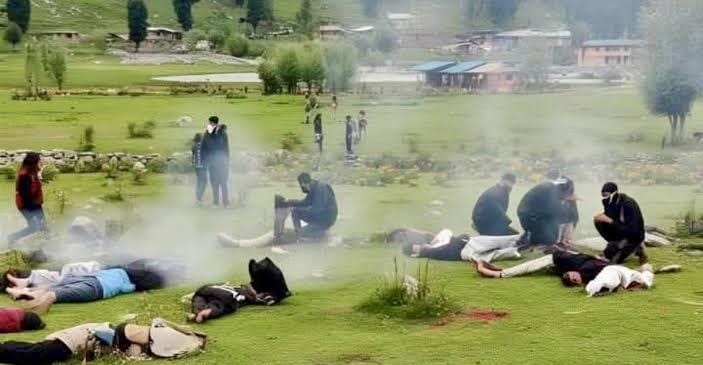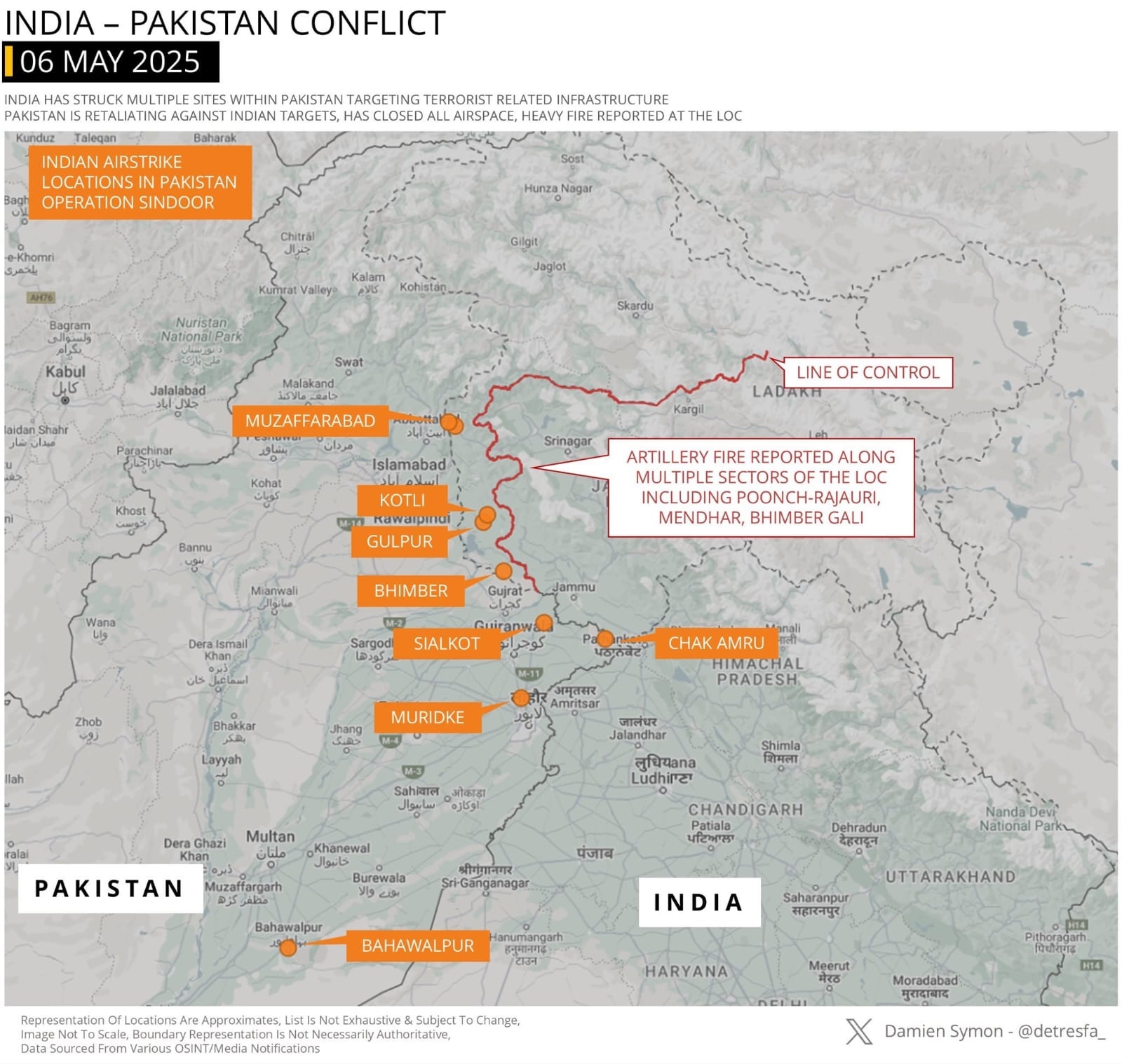Operation Sindoor Explained : When the Line Was Crossed, Without Crossing the Line

Operation Sindoor, executed on May 6, 2025, marks a pivotal moment in India's counter-terrorism strategy, reflecting a shift towards precise, intelligence-driven military responses. The operation targeted terrorist infrastructure in Pakistan and Pakistan-administered Kashmir, specifically focusing on groups like Lashkar-e-Taiba and Jaish-e-Mohammad, which India holds responsible for the April 22 Pahalgam attack that killed 26 civilians.

The operation's nomenclature, "Sindoor," symbolizing a sacred red mark, underscores India's intent to deliver a measured yet potent response without escalating into full-scale warfare. By avoiding Pakistani military installations and refraining from airspace violations, India demonstrated strategic restraint while conveying its resolve to counter cross-border terrorism.
Operational Execution: Precision, Restraint, and Messaging
The operation unfolded over a 40-minute window, with 24 missile strikes launched from mobile platforms across the LoC and international border. Operation Sindoor was executed as a tri-services mission, leveraging the Indian Army, Air Force, and Navy, with a focus on intelligence-driven targeting and technological superiority.
The strikes commenced at 1:44 AM, using a combination of stand-off precision-guided munitions (PGMs), likely including air-launched cruise missiles (such as BrahMos-A), glide bombs, and loitering munitions.

The Air Force’s Su-30 MKI and Mirage-2000 platforms were reportedly involved, launching munitions from within Indian airspace to minimise exposure and escalation risk. Army artillery and special forces provided real-time target confirmation, while naval assets maintained maritime deterrence.
Notably, the operation avoided all Pakistani military installations, underscoring India’s intent to limit the engagement strictly to terror infrastructure. This restraint was not only operational but also political, signalling to the international community that India’s actions were defensive, proportionate, and in line with international law.
The messaging was further reinforced by immediate government statements emphasising accountability for the Pahalgam attack, focus on terrorist targets, and a non-escalatory approach. The blackout in Muzaffarabad and reports of secondary explosions suggest significant damage to command-and-control nodes and ammunition stores.
The tri-services coordination, seamless intelligence fusion, and use of advanced warlike stores exemplify a maturing Indian military doctrine-one that is responsive, credible, and mindful of escalation dynamics.
Strategic Intent: Punishment, not War
The Indian political and military leadership demonstrated three core objectives:
Punish non-state actors without drawing in the state: By not hitting Pakistan Army bases or ISI hubs, India limited escalation bandwidth while still imposing costs.
Restore deterrence: After years of Pakistani adventurism under the nuclear umbrella, New Delhi signaled that proxy attacks on civilians would be met with surgical retribution.
Shape escalation dominance: By operating below the conventional war threshold, India retained escalation control and international diplomatic cover. This approach mimics the "Gray Zone" doctrine often employed by adversaries like China and Pakistan—only this time, it was India demonstrating hybrid escalation superiority.
Tactical Gains vs. Strategic Disruption
The tangible tactical impact of Operation Sindoor is the elimination of approximately 70 operatives, including senior trainers, quartermasters, and two mid-level Lashkar commanders. The immediate effect is the attrition of key leadership and infrastructure. By striking in Bahawalpur and Muridke-the ideological and operational heartlands of JeM and LeT-India has signaled its intelligence penetration and long-range strike capability. The destruction of satellite camps in Muzaffarabad and Kotli will disrupt militant rotation cycles and training throughput for at least 6–8 months.

The destruction of safe houses and communication nodes will degrade operational tempo and complicate recruitment, training, and planning cycles.
But Pakistan’s terror infrastructure is not built on tactical convenience—it’s rooted in strategic design. Groups like Lashkar-e-Taiba are enmeshed with the Pakistani military-intelligence complex. Safe houses can be rebuilt, networks reconstituted.
Therefore, the value of Sindoor lies less in damage metrics and more in:
Discrediting the idea of sanctuary in PoJK.
Forcing the Pakistan Army to recalibrate its risk calculus.
Elevating the cost of asymmetric warfare.
This is disruption, not dismantlement. It buys time and space for internal security forces and international diplomacy to work in tandem.
Pakistan Military's Reaction
The Pakistan military's reaction is predictable, yet complex:
Military Posture: Pakistan’s military will likely respond with a combination of denial, diplomatic escalation, and calibrated military signaling (heightened air defence alerts, LoC violations, and possible proxy attacks). Direct kinetic retaliation is improbable, given India’s avoidance of military targets and the risk of escalation dominance by India, especially under global scrutiny.
Internal Dynamics: The operation exposes the Pakistani military’s inability to shield its proxies, potentially eroding the credibility of the “strategic asset” doctrine. However, it may also incentivize the deep state to double down on asymmetric warfare, seeking deniability while maintaining pressure on India.
Strategic Continuum: Where India Goes from Here
1. Institutionalize Cross-Domain Deterrence
India must avoid treating Sindoor as an isolated episode. The operation should signal a shift to a new deterrence regime—one that integrates cyber, economic, diplomatic, and kinetic levers. The message must be: “If you export terror, expect consequences beyond the battlefield.”
2. Dominate the Information Space
Narrative warfare matters. India needs a coherent strategic communication doctrine that leverages real-time imagery, damage assessment, and legal justification for its strikes. Global perception management is not a luxury—it’s a battlefield.
3. Decouple Nuclear Blackmail from Proxy Terror
For too long, Pakistan has used its nuclear arsenal as a shield behind which it wages low-intensity conflict. India must continue to erode that utility by exploiting gaps below the nuclear threshold. Precision missiles, UAV-based decapitation strikes, and covert assets must become the norm—not exceptions.
4. Create a Doctrine of Persistent Pressure
Operation Sindoor should not be viewed as retaliation—it must be the first step in a doctrine of persistent pressure. This means:
High-tempo, low-visibility strikes on terror infrastructure.
Disruption of cross-border financial and logistic channels.
Psychological operations (PsyOps) targeting terrorist morale and recruitment.
Let Pakistan become the hunted, not the hunter.
5. Prepare for Escalation Windows
While Sindoor was contained, future operations may not be. India must invest in readiness for rapid air-land mobilization, civilian infrastructure hardening, and strategic stockpiling. Deterrence without capacity is bluff. Bharat must make deterrence credible.

Conclusion
Operation Sindoor is not a silver bullet—it is a scalpel. It signals strategic patience married to precision lethality. For the first time, India has demonstrated that it can punish without provoking, dominate without crossing the line, and disrupt without declaring war.
Pakistan's terror factories will adapt, but they now operate under a new paradigm: sanctuary no longer guarantees safety. India has changed the rules of the game. The burden of escalation now lies with Rawalpindi.

The task ahead is not celebratory—it is structural. Bharat must entrench this new posture into policy, procurement, and posture. While tactically successful, its strategic utility will depend on sustained intelligence dominance, escalation control, and leveraging international partnerships to impose costs on the Pakistani state for its continued sponsorship of terrorism.
The operation is a necessary, but not sufficient, condition for dismantling the terror infrastructure; it must be embedded within a broader, multi-domain, and persistent counter-terror strategy.